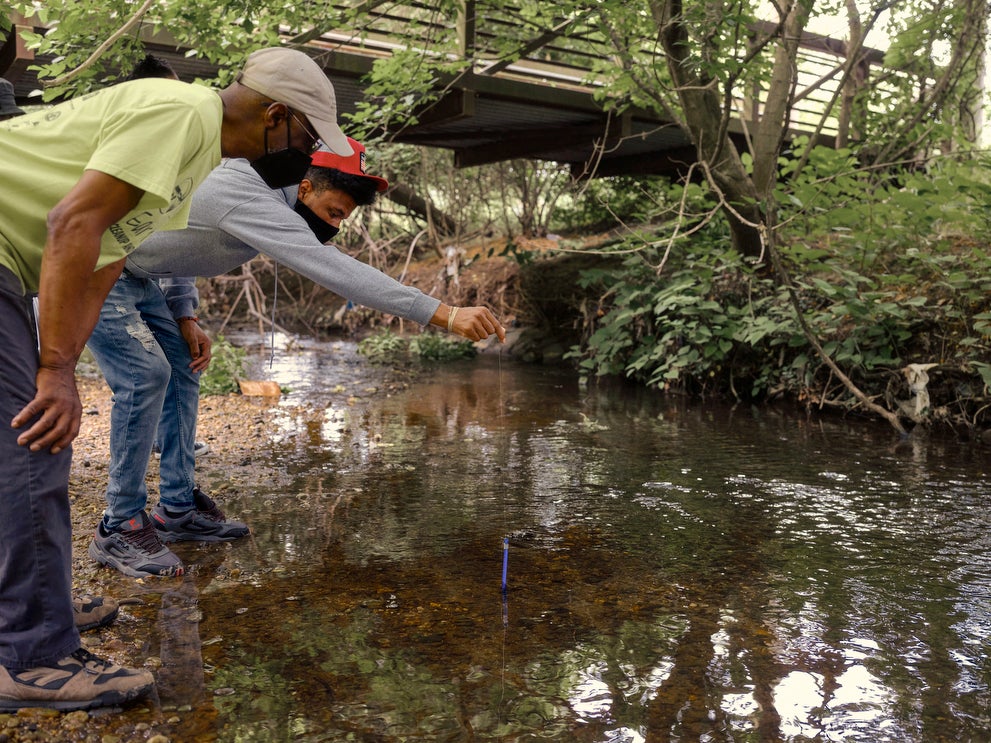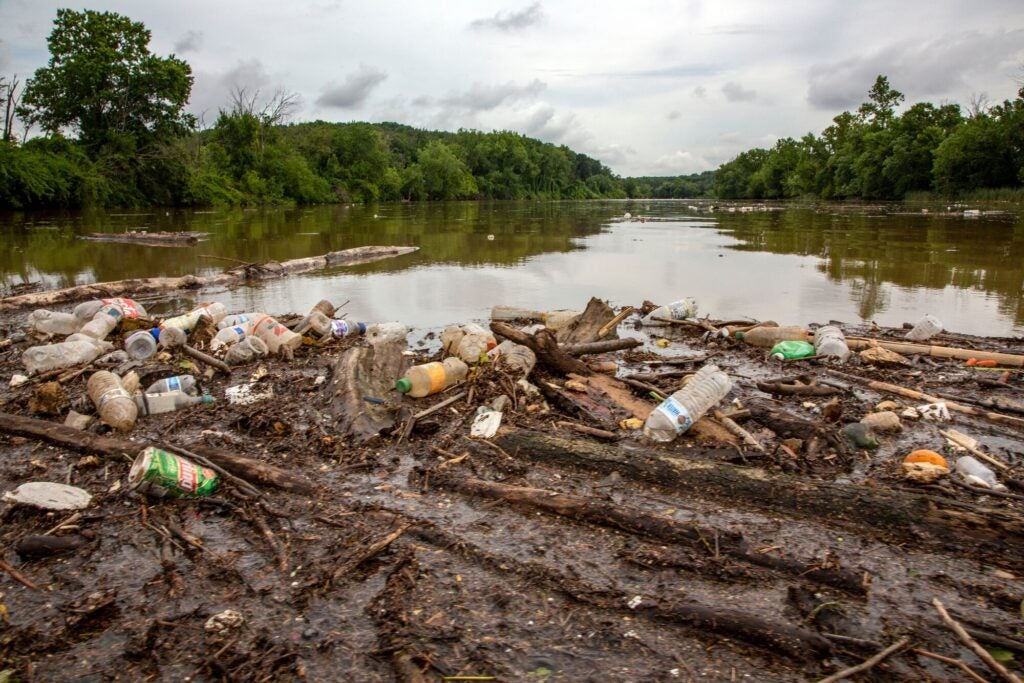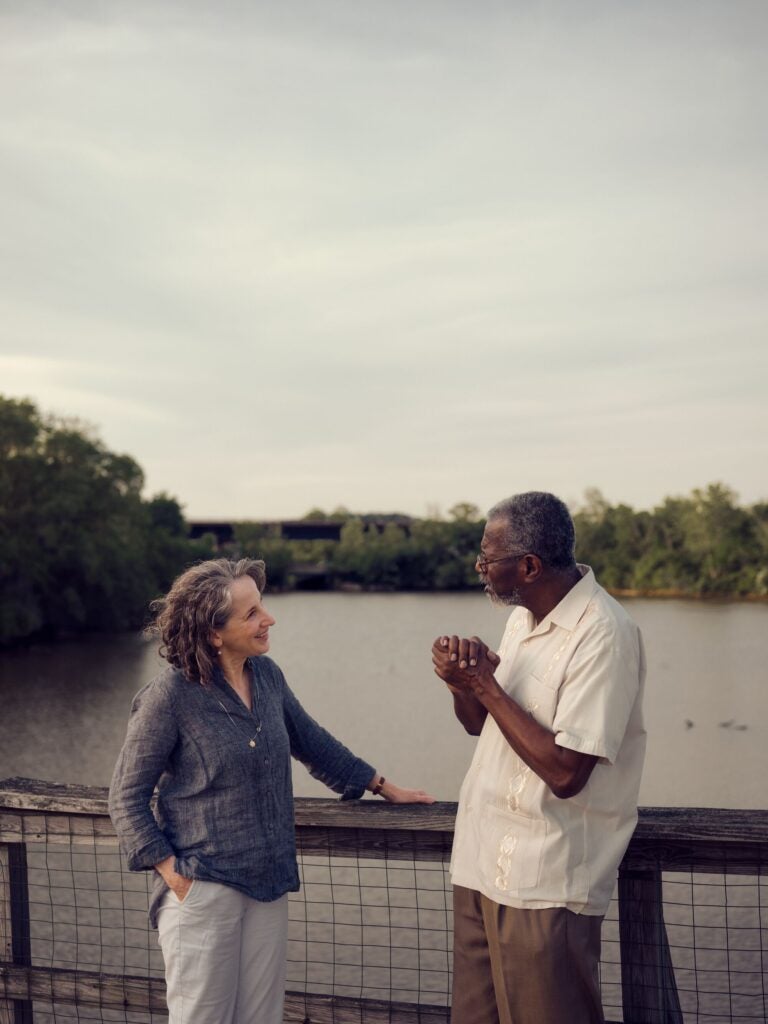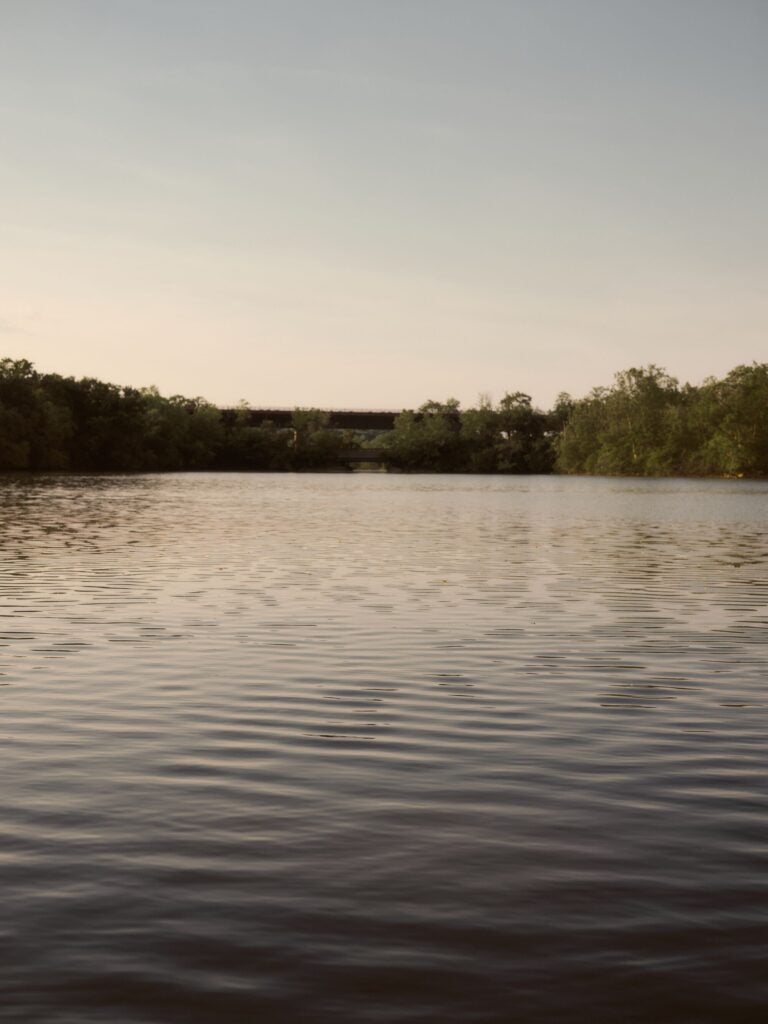An Infamously Dirty River Is Coming Back to Life Thanks to Community Activism
Due to sustained community pressure and Earthjustice litigation, D.C.’s Anacostia River is finally recovering from decades of pollution.

This page was published 4 years ago. Find the latest on Earthjustice’s work.
In the 1800s, when quarreling men in D.C. needed to settle an argument, they often challenged each other to duels. The practice was illegal, so the men would often hop across the state line to Maryland to stand off along the Anacostia in a spot known as “Blood Run.”
Dueling along the Anacostia has long fallen out of favor. But in the 1970s, a different kind of fight began brewing in D.C. and around the country as people saw polluted waterways catch fire and birds drop dead from pesticide poisoning. The public outrage eventually led to the creation of the EPA and passage of bedrock environmental laws.
These actions were historic and the benefits widespread, except in communities of color and low-income areas that bore the brunt of industrial pollution. One community, who lived next to D.C.’s Anacostia River, was tired of seeing the decline of the Anacostia firsthand, caused by projects tied to everyone from the U.S. military to a prominent Italian countess.
Today, after decades of activism by residents and legal battles brought by Earthjustice — part of a broader effort to safeguard our public lands and waters — the Anacostia is now the closest it’s been in recent history to being safe for swimming and fishing.

Pollution collects along and in the Anacostia River. (Tim Aubry / Greenpeace)
Lifelong resident Frazer Walton, Jr., who grew up just steps from the Anacostia as a child in the 1950s, is one of those residents. He remembers long summer days fishing in the river. He also remembers the day his dad told him they couldn’t fish there anymore because the water was too polluted.
Though once a thriving fishery and epicenter of trade and recreation, and long before that, the home of the Nacotchtank people, the Anacostia has gained infamy in recent decades as one of the most polluted rivers in the nation.
During the Civil War, human and industrial waste were regularly dumped in the river. By the 1950s, population growth and industrial pollution had almost destroyed the Anacostia. On any given day, you could see tires and refrigerators, basketballs, and even cars in the waters. Meanwhile, multiple U.S. presidents have crusaded to clean up the nearby Potomac River, which runs through some of D.C.’s wealthiest neighborhoods.
In the 1990s, after environmental justice leaders criticized national environmental groups for not doing enough to address the disproportionate harm inflicted on communities like the ones along the Anacostia, Earthjustice leadership pushed to expand its environmental justice work.
Fern Shepard, a former Earthjustice attorney and current chair of the Earthjustice board who moved to D.C. in 1992, soon found that the most obvious environmental injustice in this long-segregated city was the Anacostia.
“You could look at the levels of pollution in the [Anacostia and Potomac] rivers, and you could see where the most polluting and damaging projects were put,” says Shepard. “It was glaring.”
Shepard began meeting with members of the community along the Anacostia waterfront. She came across the Kingman Park Civic Association, a nonprofit community organization of which Frazer Walton was a member, and which he has served as president for nearly 20 years.
Kingman Park is a residential area in the northeast quadrant of D.C. that’s directly adjacent to the Anacostia. Starting in the 1920s, middle-class Black families set down roots in Kingman, one of the few neighborhoods in D.C. at that time that allowed African Americans to buy homes.

Earthjustice board chair Fern Shepard and Frazer Walton at Kingman Island on the Anacostia River in Washington, D.C., in May 2021. (Jared Soares for Earthjustice)
“There was tremendous pride in homeownership, and a tremendous community spirit and desire to protect what we had,” says Walton.
Walton brought Shepard to the river to see what the community had been dealing with, like sewage seeping out of pipes and toxic-looking foam floating on the river’s surface.
The civic association, which had never before filed an environmental lawsuit, alerted Earthjustice to what it felt was the river’s most immediate threat: a proposal from Italian countess, Bina Sella di Monteluce, to turn the nearby Kingman and Heritage Islands into a giant for-profit children’s theme park.
“Our clients wanted to see those islands protected and the area preserved for nature and for their communities, not for tourists to come in and ride rollercoasters,” says Shepard.
Once the groups stopped the theme park proposal, they set their sights on other threats to the Anacostia. These included a nearby naval yard that for decades had leaked toxic pollutants into the river, as well as a new freeway proposed across the Anacostia that involved digging up as many as 59,000 tons of lead-contaminated soil next to residential neighborhoods.
The civic association, together with conservation groups like Anacostia Riverkeeper, brought on-the-ground experience. Earthjustice brought the legal expertise.
“It was a tremendous fight,” says Walton. “And Earthjustice put a lot of effort into it.”
One of their most consequential and longstanding battles stemmed from the type of pollution that Walton’s father, Frazer Sr., had told him about as a child.
In the 1960s, the district built the multipurpose Robert F. Kennedy Memorial Stadium about a quarter mile from the Kingman Park neighborhood. But it failed to plan for the amount of sewage that thousands of sports fans would generate during every game.
As his father, who worked for the city’s water and sewage department, explained to a young Walton, “Can you imagine 50,000 people using the bathroom at the stadium and what that would do to the river?”
The crux of the problem was the district’s combined sewer and storm water system, which carries raw sewage and storm water together in the same pipes from buildings and homes across D.C. Similar systems exist in cities across the country. D.C.’s system was overtaxed and in disrepair, and after every heavy rain, litter and raw sewage poured into the Anacostia, eventually rendering the river unusable and unsafe.
Earthjustice attorney David Baron sued the city’s sewer utility, alleging that pollution discharges from the combined system violated the Clean Water Act. He spent months combing through records of the sewer authority and found that the sewer system was actually designed to dump sewage into the river during rainstorms. It wasn’t just an occasional spill, but literally billions of gallons every year. And it was illegal. At the same time, local groups bird-dogged politicians to keep the pressure on about an issue they were directly contributing to every time those officials flushed a toilet in the U.S. capital.
“We became the outcast with the city government. And if you care about that type of thing, you will correct yourself very quickly. But if you don’t care, the government doesn’t know what to do with you,” says Walton. “They didn’t know what to do with Earthjustice. And they didn’t know what to do with the civic association.”

Dennis Chestnut in front of his home in the Eastland Gardens neighborhood in Washington, D.C., on May 21, 2021. (Jared Soares for Earthjustice)
The sustained pressure eventually worked, leading to settlements requiring the city to undertake massive projects to stop the free flow of sewage into the river. This includes a roughly $3 billion plan to construct a complex of underground tunnels to capture and treat sewage overflows, reducing the amount of sewage entering the river by 98 percent.
Today, D.C. has one of the most effective sewage overflow control programs in the nation.
“When we brought the island theme park case, we didn’t know we’d be spending 30 years representing the Kingman Park neighborhood case after case. But these communities knew the potential of the river and they needed help to realize the dream they had for it,” says Shepard of Earthjustice.
As flickers of revival pop up along the Anacostia waterfront, like new microbreweries and luxury apartment buildings, residents like Walton stress the need to plan sustainably and equitably for the new growth.
“This is going to be a new fight, and it’s got to be well-planned because if it’s not, they will destroy everything that the community has worked so hard for,” says Walton.
Dennis Chestnut, another lifelong resident and tireless Anacostia advocate, is excited about the prospect of renewal and agrees that any plans for the Anacostia must engage the local community.
“If the community isn’t healthy, then the river isn’t healthy,” says Chestnut, who became connected to the Anacostia after learning to swim in it as a child when African Americans weren’t allowed in the city’s public pools.
A self-described “civic ecology practitioner,” Chestnut works to instill an environmental ethic in his community by teaching his grandkids to pick up trash along the river, as well as volunteering his skills as a master carpenter to teach high school students how to build green infrastructure like tiny homes. He looks forward to the day he can take his grandkids to the river and swim with them.
“You can get out on the river, and you wouldn’t even realize that you’re still inside of an urban area because of how natural it is,” says Chestnut, who wants to see wildlife like egrets, osprey, deer, and beaver that are flourishing remain.

The Anacostia River near Kingman Island in Washington, D.C., on May 23, 2021. (Jared Soares for Earthjustice)
Earthjustice’s Washington, D.C., office works at the federal level to prevent air and water pollution, combat climate change, and protect natural areas. We also work with communities in the Mid-Atlantic region and elsewhere to address severe local environmental health problems, including exposures to dangerous air contaminants in toxic hot spots, sewage backups and overflows, chemical disasters, and contamination of drinking water. The D.C. office has been in operation since 1978.